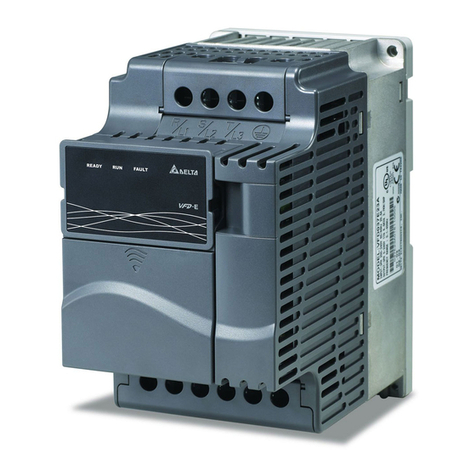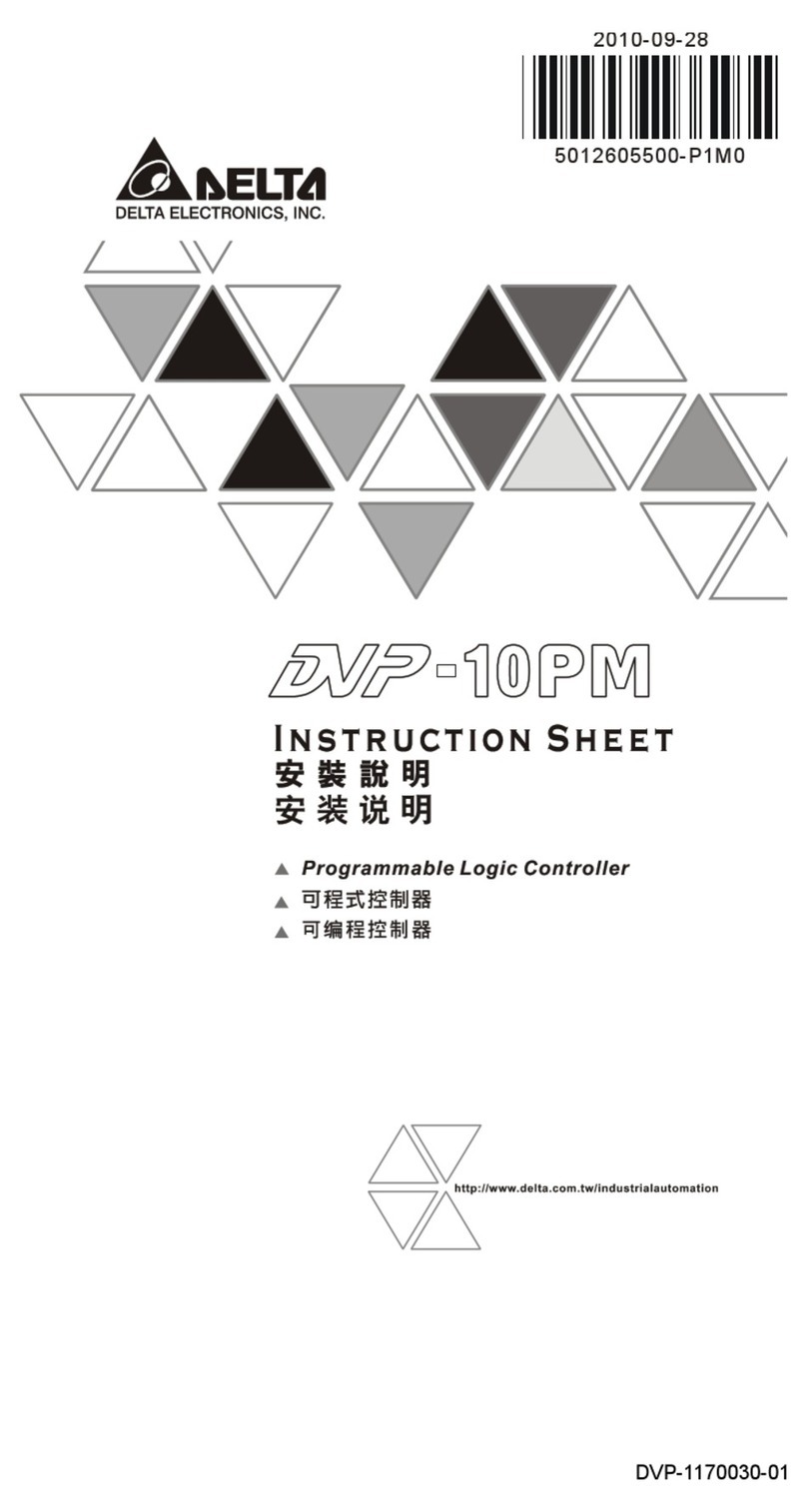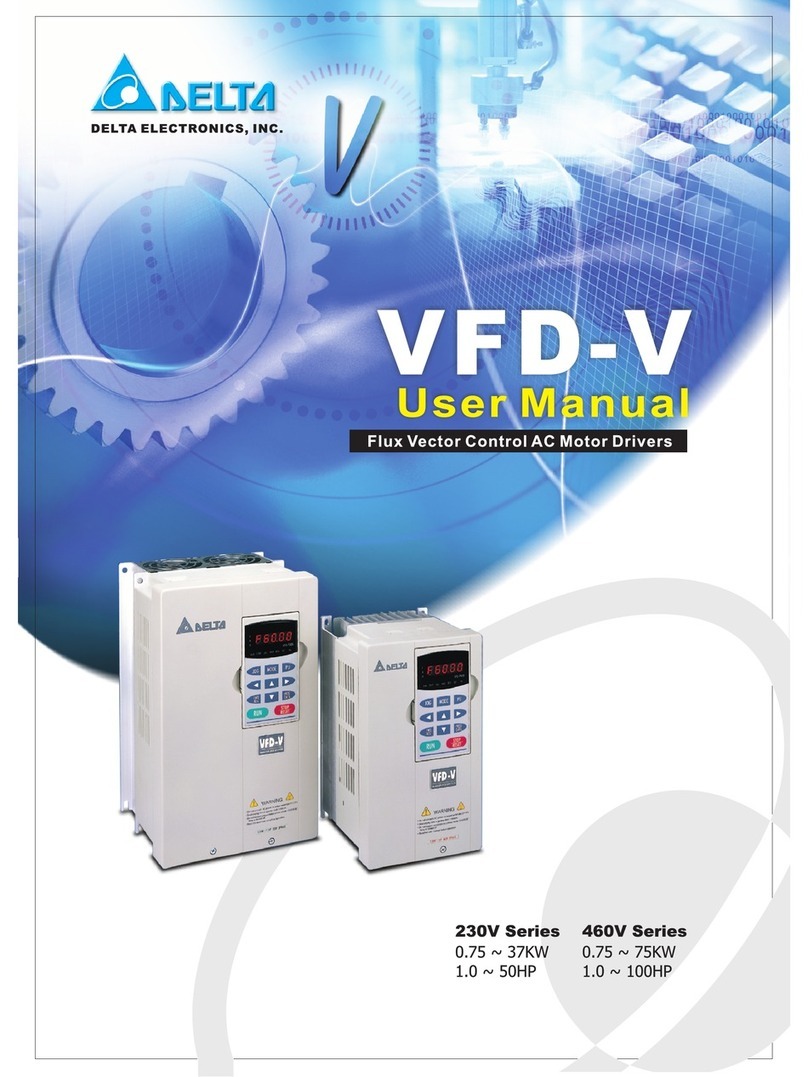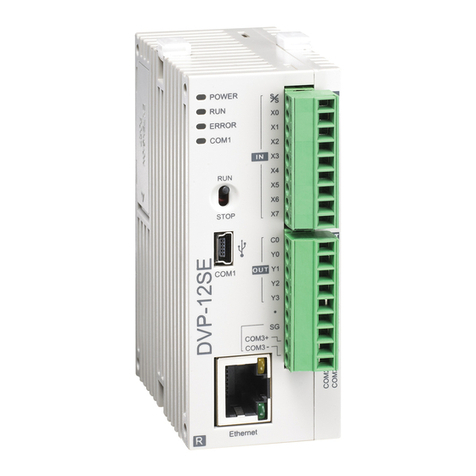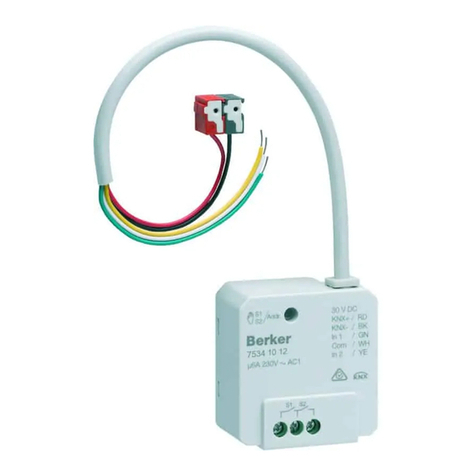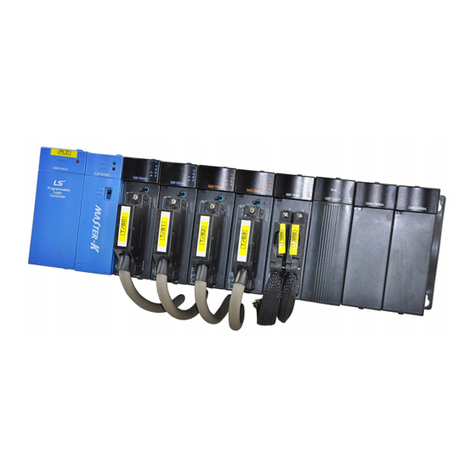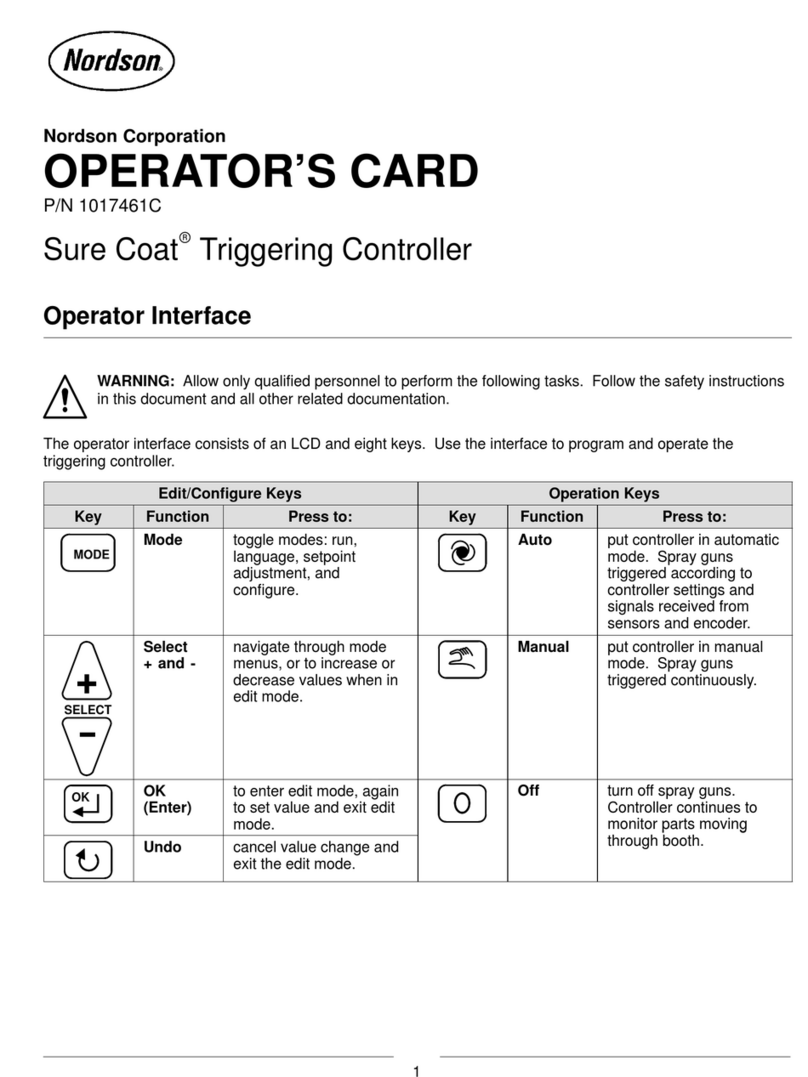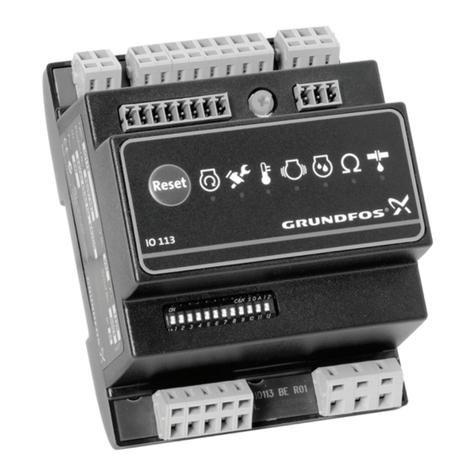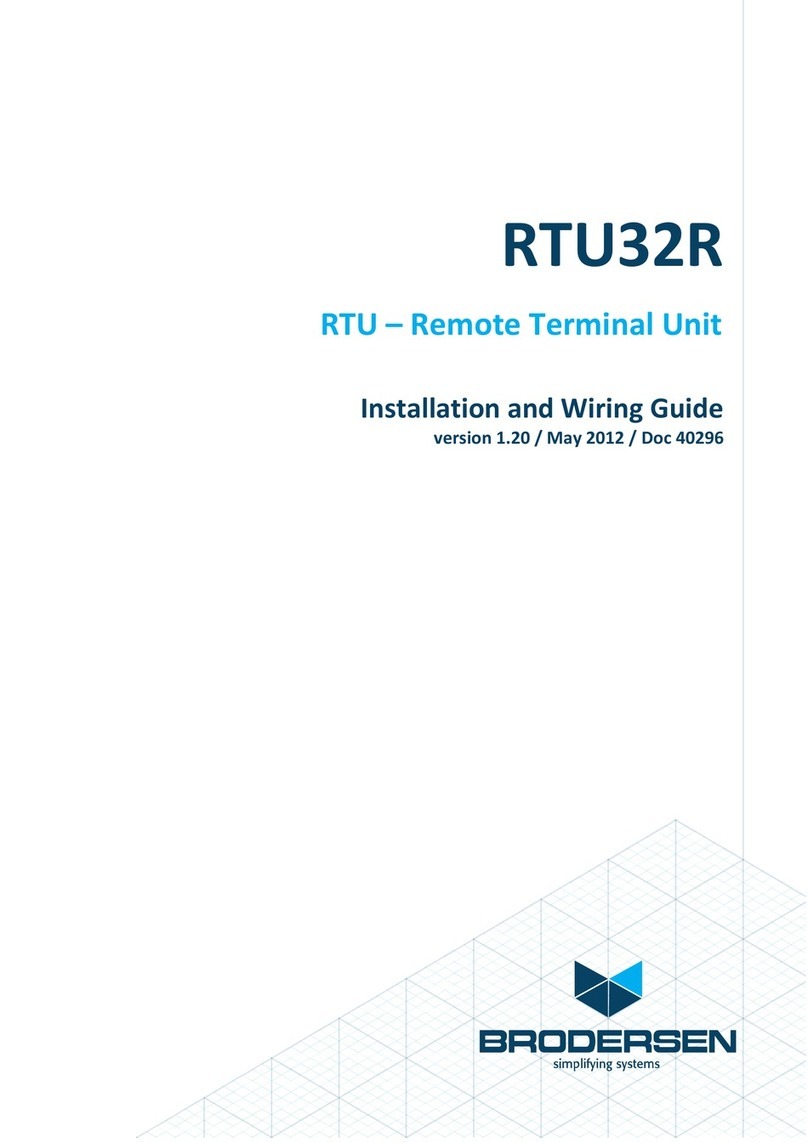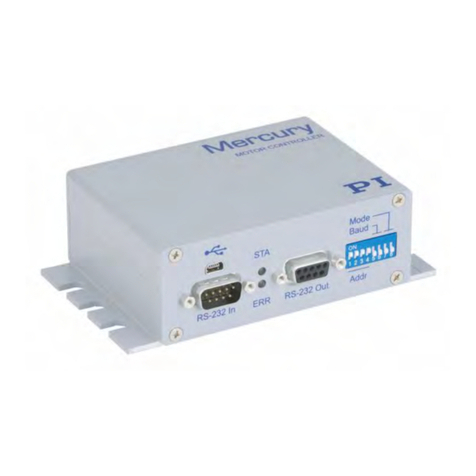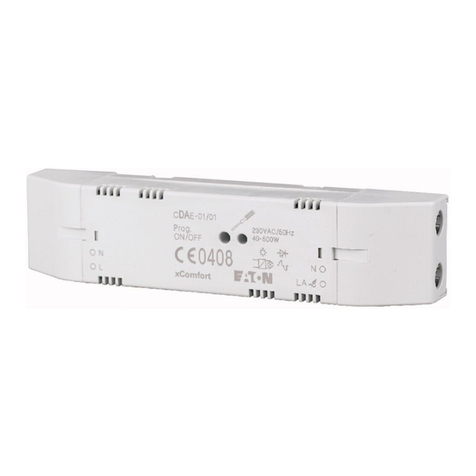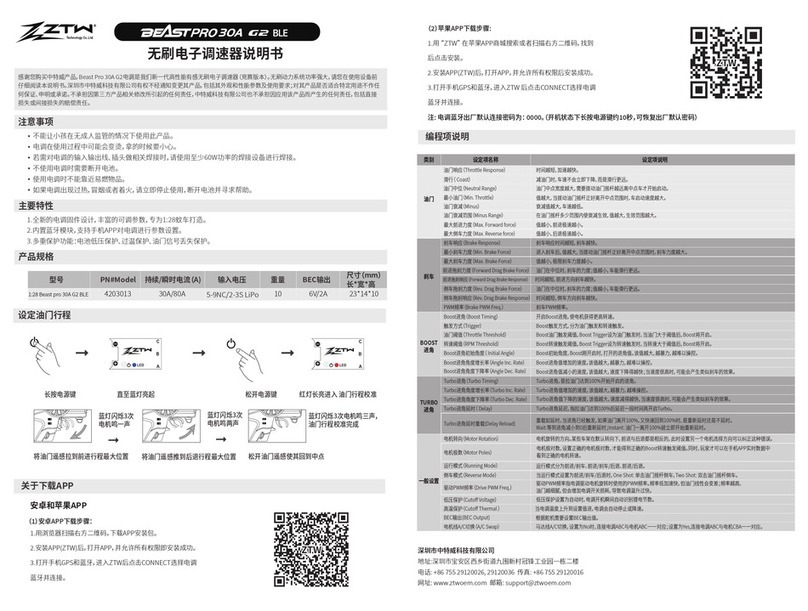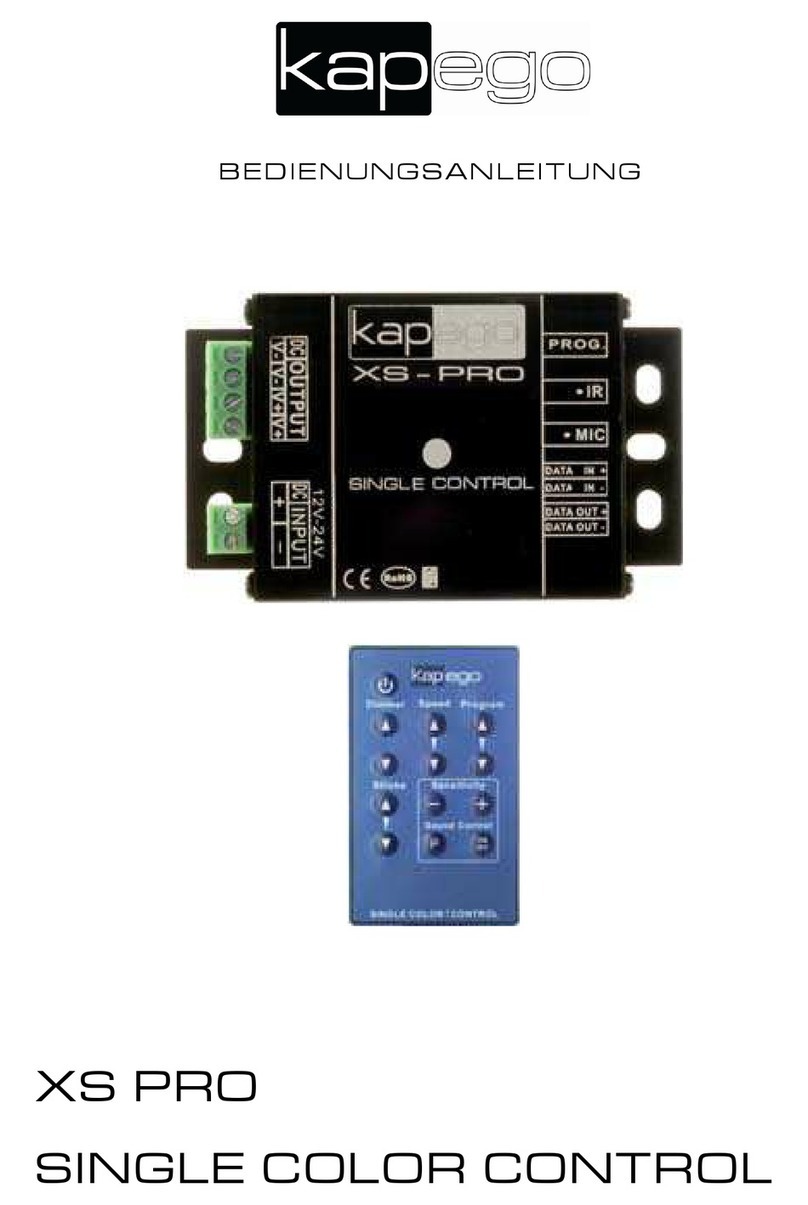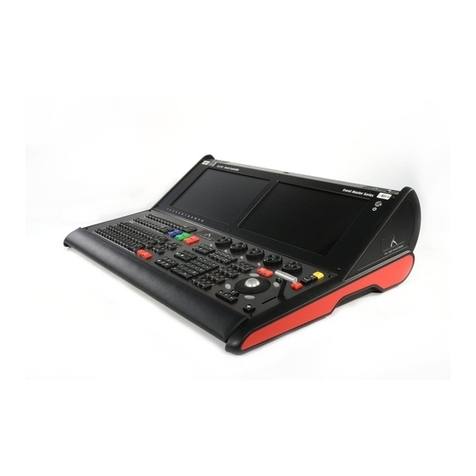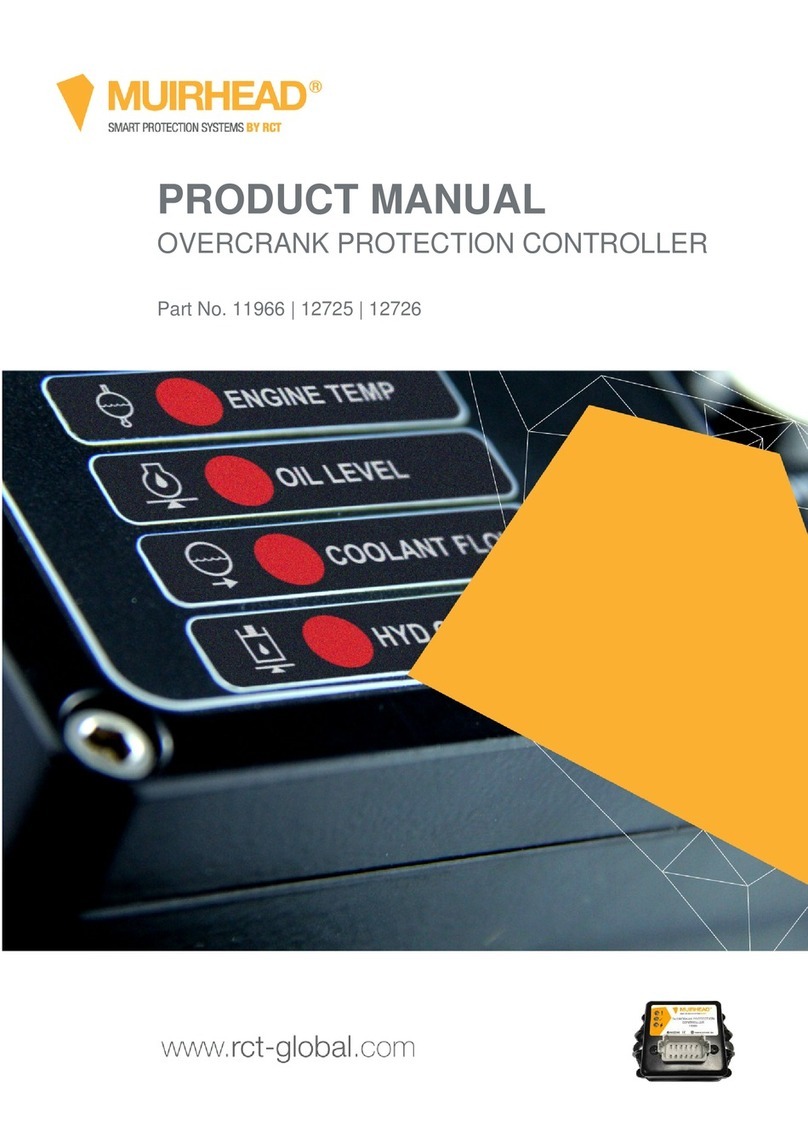Delta DC-132 Series User manual

Description
This 24 Vac, non-spring return electronic actuator is designed for modulating
and three-position control of building HVAC valves and dampers.
Features
• Brushless motor technology with stall protection
• Unique self-centering shaft coupling
• Manual override
• 132 lb-in (15 Nm) torque
• 5° preload as shipped from factory
• Mechanical range adjustment capabilities
• Offset and span adjustment models available
• Models with independently adjustable, dual auxiliary switches available
• Built-in 1/2-inch conduit connection
• UL and C-UL listed, CE certified
DC-132 Non Spring Return Electronic Actuator Series
Delta Control Products, Inc.
2031 West Rose Garden Lane
Phoenix, AZ 85027
623-780-2408
Product Numbers
Table 1.
Operating
Voltage Control Built-in Control
Options
Product
Number
DC24-132-T
DC24-132-TA
DCM24-132
DCM24-132-ZA
24 VAC ±20%
Modulating 0-10 VDC
3-Position (Tri-State)
Position Feedback
Dual Auxiliary Switches
Off-Set and Span
Input Signal Selectable

Operating voltage 24 VAC ±20%
Frequency 50/60 Hz
Power consumption
Running:
DCM24-132, DCM24-132-ZA 5 VA/4W
DC24-132-T, DC24-132-T 3 VA/3W
Holding:
DCM24-132, DCM24-132-ZA 1 VA/1W
Equipment rating Class 2, in accordance with UL/CSA
Class III per EN 60730
Input signal (wires 8-2) DCM24-132, DCM24-132-ZA
Voltage-input 0 to 10 Vdc (max. 35 Vdc)
Input resistance >100K ohms
Position output signal (wires 9-2) DCM24-132, DCM24-132-ZA
Voltage-output 0 to 10 VDC
Maximum output current ±1 mA
Running torque 132 lb-in (15 Nm)
Maximum torque 265 lb-in (30 Nm)
Runtime for 90° opening or closing
60 Hz 125 seconds
50 Hz 150 seconds
Nominal angle of rotation 90°
Maximum angular rotation 95°
Shaft size 1/4 to 3/4-inch (6.4 to 20.5 mm) dia.
1/4 to 1/2-inch (6.4 to 13 mm) square
Minimum shaft length 3/4-inch (20 mm)
Enclosure NEMA 1
IP54 according to EN 60 529
Material Die cast aluminum alloy
Gear lubrication Silicone free
Ambient temperature
Operation -25°F to 130°F (-32°C to 55°C)
Storage and transport -40°F to 158°F (-40°C to 70°C)
Ambient humidity (non-condensing) 95% rh
UL60730 (to replace UL873)
C-UL certified to Canadian Standard
C22.2 No. 24-93
Control signal adjustment (-Z Models)
Offset (start point) Between 0 to 5V
Span Between 2 to 30V
Dual auxiliary switches (A Models)
AC rating 24 to 250 Vac
AC 6A resistive,
AC 2A general purpose
DC rating 12 to 30 Vdc
DC 2A
Switch Range
Switch A 0 to 90° with 5° intervals
Recommended range usage 0 to 45°
Factory setting 5°
Switch B 0 to 90° with 5° intervals
Recommended range usage 45 to 90°
Factory setting 85°
Switching hysteresis 2°
Feedback potentiometer DCM (Modulating Units) 0 to 1000 ohm <10 mA
Voltage UL-Class 2 (SELV/PELV for CE)
Pre-cabled connection 18 AWG
Cable length 3 feet (0.9m) length
Life cycle Designed for over 50,000 full strokes
at rated torque and temperature
Dimensions: Inches (mm) 8-3/8 H × 3-1/4 W × 2-2/3 D
(212 H × 83 W × 68 D)
Weight 2.2 lbs. (1 kg)
Power Supply
24 VAC
Control Signal
Feedback Signal
Function
Mounting
Housing
Ambient Conditions
Agency Certification
Auxiliary Features
Miscellaneous
Specifications
PAGE 2

14
15
12
11
2
3
4
5
6
1
10
9
13
8
7
Legend
1. Actuator housing
2. Positioning scale for angle of
rotation
3. DIP switches and cover
4. Span adjustment
5. Offset (start point) adjustment
6. Mounting bracket
7. Connection cable for power
and control signals
8. Connection cable for auxiliary
switches or feedback potentiometer
9. Manual override
10. Auxiliary switches A & B
11. Position indicator
12. Self centering shaft adapter
13. 1/2-inch NSPT conduit
connection
14. Shaft adapter locking clip
15. Position indicator adapter
Figure 1. Non-Spring Return Actuator Components.
Actuator Components
Operation
DCM24-132 and DCM24-132-ZA
Apply a 0 to 10 Vdc control signal between wire 8 (Y) and wire 2 (G0) to operate the damper actuator. The angle of rotation
is proportional to the control signal. A 0 to 10 Vdc position feedback output signal is available between wire 9 (U) and
wire 2 (G0) to monitor the position of the damper motor. In the event of a power failure, the actuator holds its position. In
the event that only the control signal is lost, the actuator returns to the "0" position.
DC24-132-T, DC24-132-TA
A floating control signal controls the damper actuator. The actuator’s angle of rotation is proportional to the length of
time the signal is applied. A 24 Vac control signal to wire 6 (Y1) causes the actuator coupling to rotate clockwise. A 24 Vac
control signal to wire 7 (Y2) causes the actuator coupling to rotate counterclockwise. To reverse the direction of rotation,
wires 6 (Y1) and 7 (Y2) can be interchanged. With no control voltage, the damper actuator holds its position.
Overload Protection
In the event of a blockage in the damper, the actuator is overload protected over the full rangeto prevent damage to the
actuator.
PAGE 3

Damper Mounting and Installation
• Place the actuator on the damper shaft so that the front of the actuator is accessible. (The label and the manual override button
are on the front side.)
• The minimum damper drive shaft is 3/4-inches (20mm). The shaft length determines whether the shaft adapter will be
mounted on the front or back of the actuator.
• Refer to Specifications for minimum and maximum damper shaft dimensions.
• Set auxiliary switches, DIP switches, and Offset/Span as required by your application. (See following sections for details.)
• The position indicator can be mounted to show either the clockwise or counterclockwise 0 to 90 scale.
• A mounting bracket is included with the actuator.
• The shaft adapter and mounting parts are shipped in a separate container with the actuator.
• The actuator is shipped from the factory with a 5° pre-load to ensure tight damper close off.
• Detailed mounting instructions are included with each actuator.
Manual Override
Mechanical Range Adjustment
1
3
2
PUSH
L > 3 in.
77mm
L < 2-3/8 in.
60mm
3
2
PUSH
To move the damper blades
and lock the position with no
power present:
1. Hold down the PUSH
button.
2. Make adjustments to the
damper position.
3. Release the PUSH button.
Once power is restored, the
actuator returns to automated
control.
1
2
Figure 2.
90
5
4
Figure 3.
90
45
Figure 4.
90
45
Figure 5.
The angular rotation is adjustable between 0 and 90° at 5-degree intervals. The range of shaft movement is limited by mounting the
shaft adapter:
1. Loosen the shaft adapter from the damper shaft and remove the actuator from the damper shaft.
2. Remove the clip and shaft adapter from the actuator.
3. Return the actuator gear train to the “0” position using the steps that follow for the clockwise or counterclock wise damper
shaft rotation.
Clockwise to open:
a. Insert the shaft adapter to the right as close as possible to the raised stop. See Figure 3.
b. Hold down the PUSH button and rotate the shaft adapter to the left until it stops. See Figure 4.
c. Release the PUSH button.
d. If the shaft adapter is not resting against the left raised stop, remove the adapter and insert it against the left stop.
e. Place the position indicator to the “0” position on the outside scale. See Figure 5.
Counterclockwise to open:
a. Insert the shaft adapter to the left as close as possible to the raised stop.
b. Hold down the PUSH button and rotate the shaft adapter to the right until it stops.
c. Release the PUSH button.
d. If the shaft adapter is not resting against the right raised stop, remove the adapter and insert it against the right stop.
e. Place the position indicator to “0” on the inside scale.
4. Determine the angle of rotation for the damper blade shaft. Subtract that amount from 90°.
5. Remove the shaft adapter and insert it with the position indicator pointing to the mark on the scale calculated in the
previous step. See Figure 4.
6. Attach the clip.
7. Rotate the damper blade shaft to its “0” position.
8. Return the actuator to the damper shaft and tighten the shaft adapter to the damper shaft.
PAGE 4

Control Signal Adjustment
DCM24-132-ZA
100
0
U
O
∆U (max. 30 V)
Y
U
(v)
Y
S
(%)
25 30
2)1) 3)
35
0
5
1
2
3
4Uo
2
30
10
16
24
Uo
U
U
V
Factory setting:
30V span
0 offset
The offset (start point) and span of the control signal can be adjusted. The offset, Uo, can
be adjusted between 0 to 5 Vdc. The span, ∆U, can be adjusted between 2 to 30 Vdc.
Ys Mechanical positioning range (100% = angle of rotation 90°)
Yu Control signal
Uo Offset (start point)
∆U Span
NOTE: When the mechanical limitation of the angle of rotation and self-adaptive function are ON, 100% does
not equal 90°.
1. Uo = 0V, ∆U = 2V: The minimum working range for Ys = 100%
2. Uo = 5V, ∆U = 30V: The maximum working range for Ys = 100%
3. Uo = 0V, ∆U = 30V: Factory setting
Figure 6. The Minimum and Maximum Control Signal Adjustment
Example:
Open the actuator from 0 to 50% (45°) using a control signal of:
Umin= 2V to Umax= 10 V.
Calculating the value of ∆U:
∆U = = = 16 V
100[%} (Umax-Umin) 100 x (10-2)
Working angle of rotation in % 50
Uo = 2; ∆U = 16 V
Umin = minimum control signal
Umax = maximum control signal
100
0
∆U (16 V)
Y
U
(v)
Y
S
(%)
21810
U
min
U
max
50
U
o
Figure 7. Example.
AB
-2,5 0 10 20 30 70 80 90 92,5
0 10 20 30 70 80
92,5 90 80 70 60 20 10 -2,5
90
0
Actuator scale: Clockwise
Adjustment range for switches A and B:
Setting interval: 5°
Switching hysteresis: 2°
Actuator Scale: counterclockwise
Dual Auxiliary Switch
DC24-132-TA,
DCM24-132-ZA
To change the settings of A and B:
NOTE: The scale is only valid when the actuator is in the "0" position on clockwise motion.
• Use the adjustment tool provided with the actuator
to turn the switch adjustment dials to the desired signal setting.
Factory setting:
Switch A 5°
Switch B 85°
0
5
04
03
02
01
0
5
06
0
7
0
8
09
A
B
Aux Switch
Adjustment
Figure 8. Dual Auxiliary Switch Dials.
NOTE: Use the long arm of the "†" to point to the position of switch A. Use the
narrower tab on the red ring to point to the position of switch B
PAGE 5

DIP Switch Functionality
DCM24-132
DCM24-132-ZA Description Label Description Function
Counterclockwise Clockwise Rotary Angle Direction
Active 0Off Self-adaptation to mechanical range
2-10 Vdc 2-10 0-10 0…10 Vdc DCM24-132: Positioning control signal
2-10 or 0-10
Offset 0-5V
Span 2-30V ADJ 0-10 0...10 Vdc
DCM24-132-ZA: Positioning signal.
Turn on or off capability to adjust offset/span.
Figure 9. DIP Switches.
Rotary direction • The arrow direction must match the rotational direction of the actuator.
• Factory setting:
Self-adapting • Alternative switch-on/off for self-adaptation.
: ON
0: OFF
• Factory setting: 0
0
Positioning Control Signal : (DCM24-132)
• Alternative settings:
2-10 Vdc
0-10 Vdc
• Factory setting: 0-10
2-10 0-10
Positioning Control Signal: (DCM24-132-ZA)
• Alternative settings:
ADJ: Allows offset/span adjustment capability
0-10V: Ignores offset/span capability and provides
0-10 Vdc input signal only
• Factory setting: ADJ
ADJ 0-10
Wiring
All wiring must conform to NECand local codes and regulations. Use earth ground isolating step-down Class 2 transformers. Donot use autotrans-
formers. The maximum rating for a Class 2 step-down transformer is 100 VA. Determine the supply transformer rating by summing the VAratings of
all actuatorsand all other components used. It is recommended that one transformer power nomore than 10 actuators (or 80%of its VA).
Wire Designations
M
AB
S1 S4
S2 S3 S5 S6
1
8
2
9
M
AB
1000
P1 P3P2 S1 S4
S2 S3 S5 S6
1
67
Figure 10. Modulating 0 to 10 Vdc Control. Figure 11. 3-Position Control.
Actuators Terminal
Designations Color
1 Supply (SP) G Red
2 Neutral (SN) G0 Black
6 Control signal clockwise Y1 Violet
7 Control signal counterclockwise Y2 Orange
8 0 to 10 Vdc input signal Y Gray
24Vac
Power Supply
9 Output for 0 to 10 Vdc position indication U Pink
S1 Switch A Common Q11 Gray/red
S2 Switch A N.C. Q12 Gray/blue
S3 Switch A N.O. Q14 Gray/pink
S4 Switch B Common Q21 Black/red
S5 Switch B N.C. Q22 Black/blue
Auxiliary
Switches
S6 Switch B N.O. Q24 Black/pink
P1 Feedback Potentiometer 0 to 100% P1 - P2 a White/red
P2 Feedback Potentiometer Common b White/blue
Potentiometer
P3 Feedback Potentiometer 100 to 0% P3 - P2 c White/pink
Symbol Function
PAGE 6

Dimensions
min. 1/2
(12)
5-9/16
(141)
8-3/8
(212)
1-11/16
(42)
1-3/16
(30)
1-3/16
(30)
1/8
(3)
min. 4
(100)
min. 6
(150)
min.2-3/8
(60)
min. 4
(100) 3 ft
(900)
2-3/8
(60)
1/2" NSPT
1/2
(12)
3/4
(19)
47.5˚ 47.5˚
min. 4
(100)
3.25
(83)
Figure 12. Dimensions of the DC-132 Actuator Series
PAGE 7
This manual suits for next models
4
Table of contents
Other Delta Controllers manuals

Delta
Delta AS Series User manual
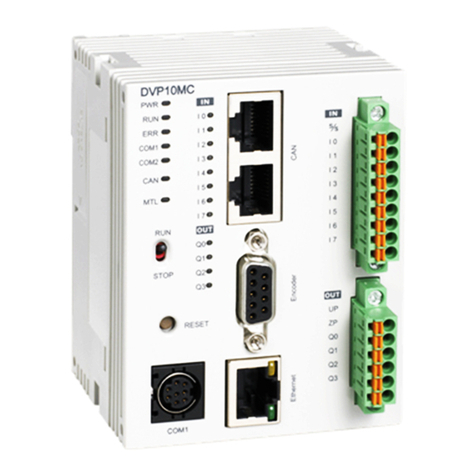
Delta
Delta DVP-MC Series User manual
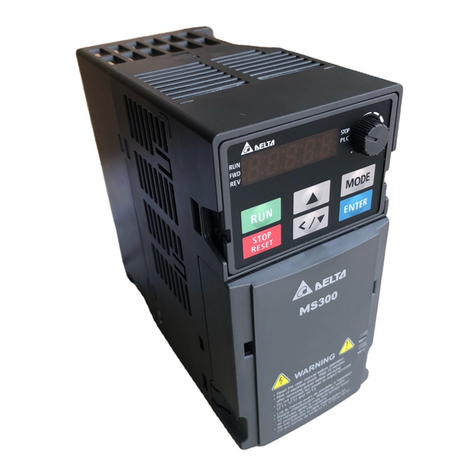
Delta
Delta VFD7A5MS23ANSHA User manual
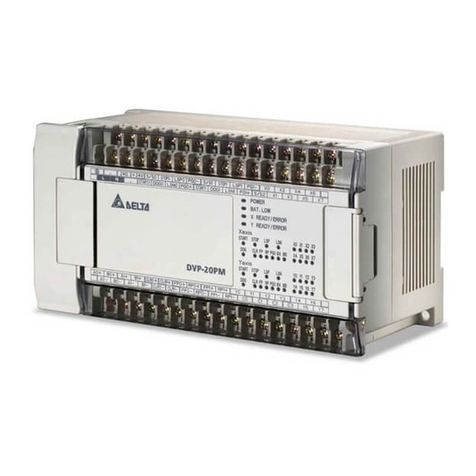
Delta
Delta DVP-PM Series Instructions for use
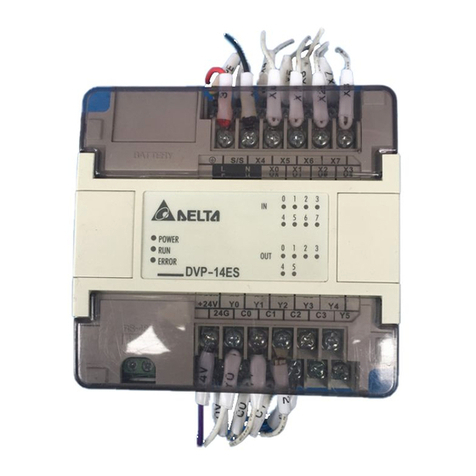
Delta
Delta DVP14ES00R2 User manual
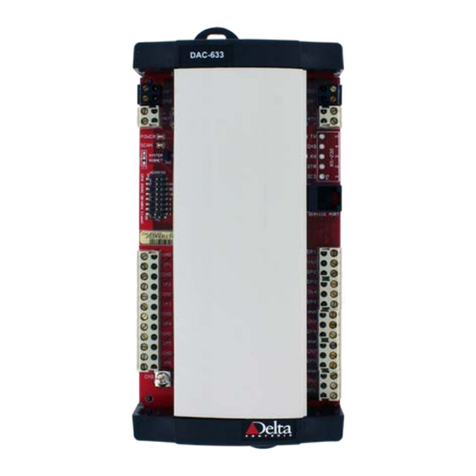
Delta
Delta DAC-633 User manual
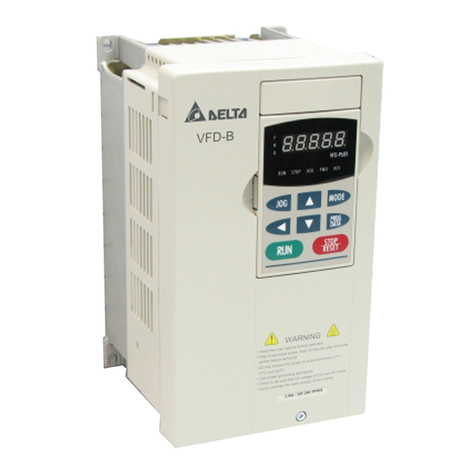
Delta
Delta VFD-B Series User manual
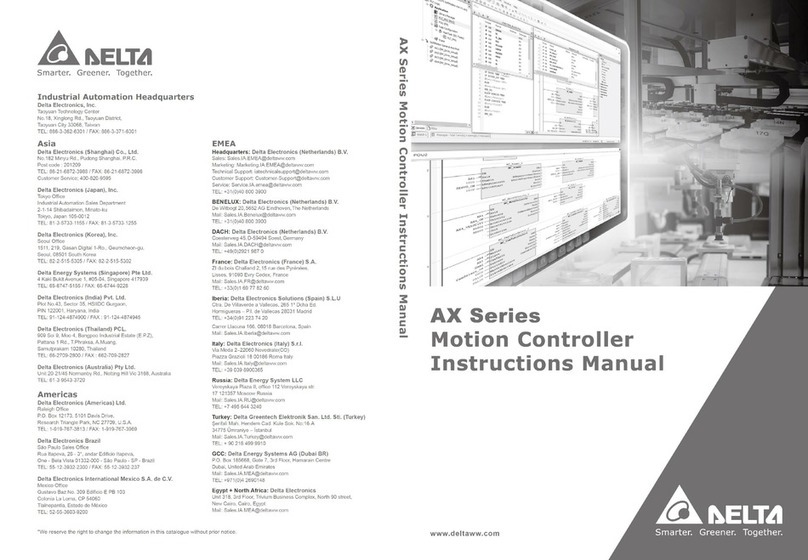
Delta
Delta AX Series User manual
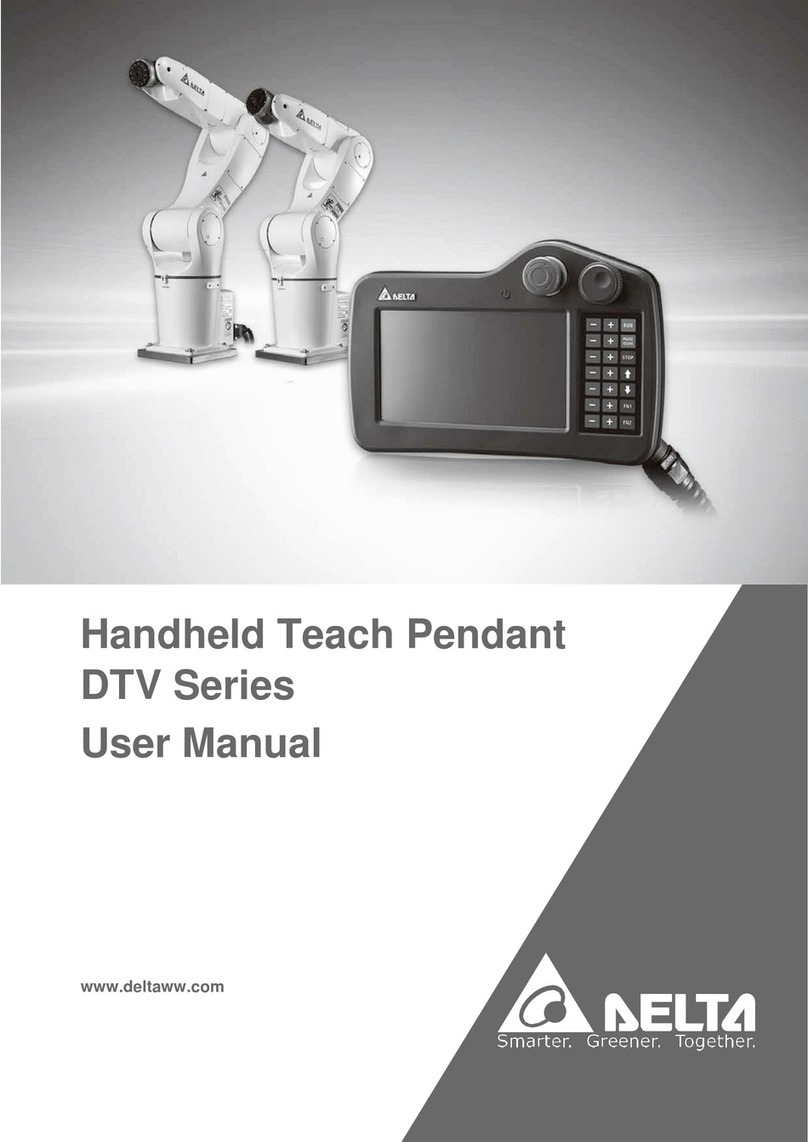
Delta
Delta DTV Series User manual
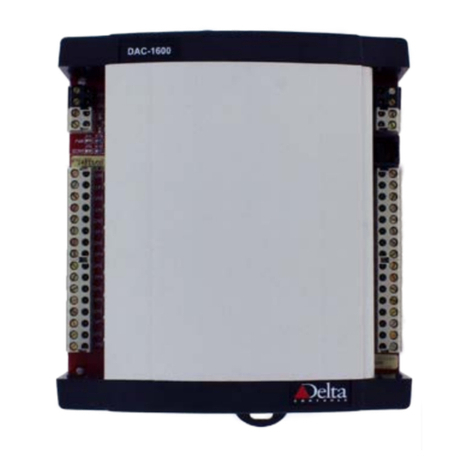
Delta
Delta DAC-1600 User manual

Delta
Delta DVP-SX2 User manual
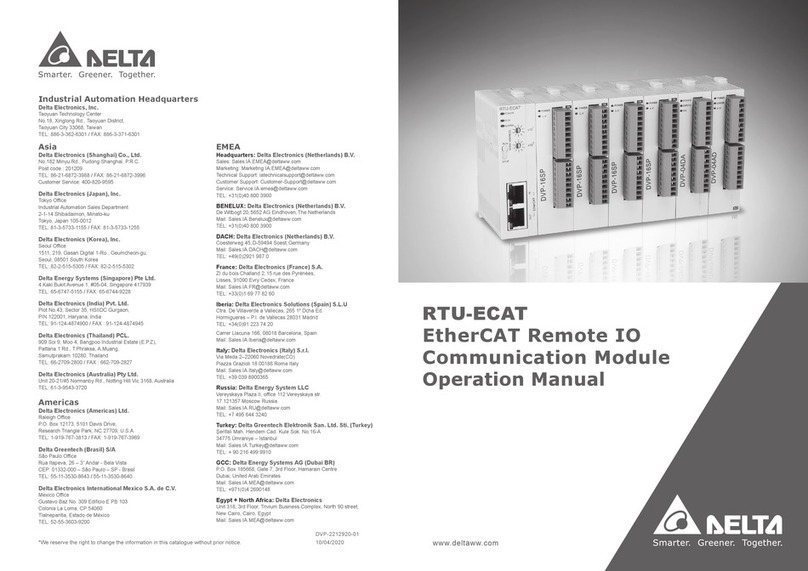
Delta
Delta RTU-ECAT User manual
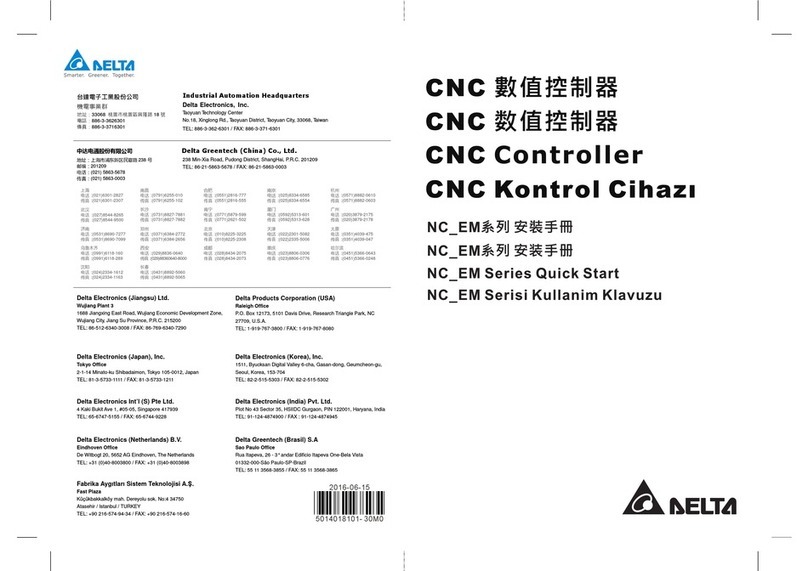
Delta
Delta NC EM Series User manual
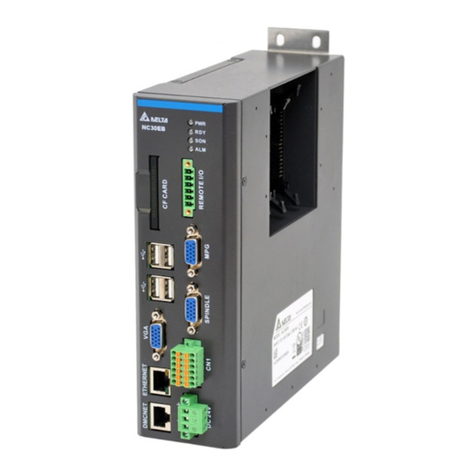
Delta
Delta NC10EB User manual
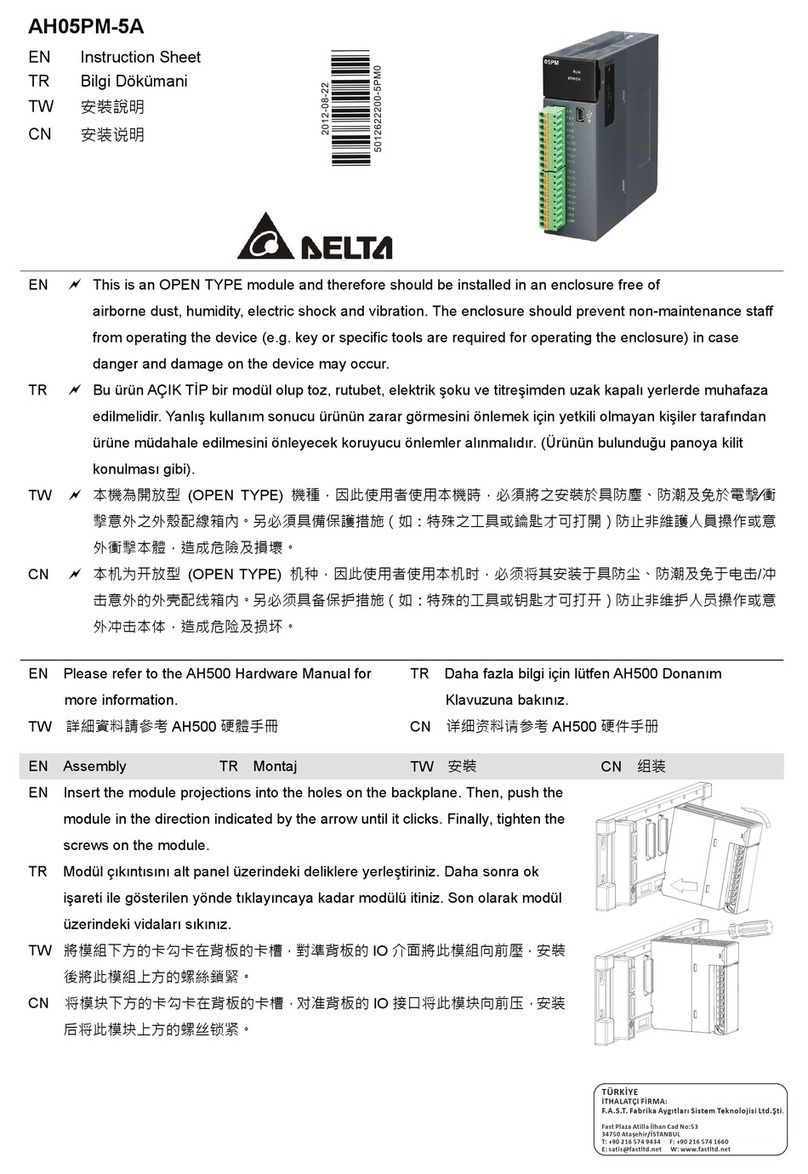
Delta
Delta AH05PM-5A User manual

Delta
Delta RMC70 User guide
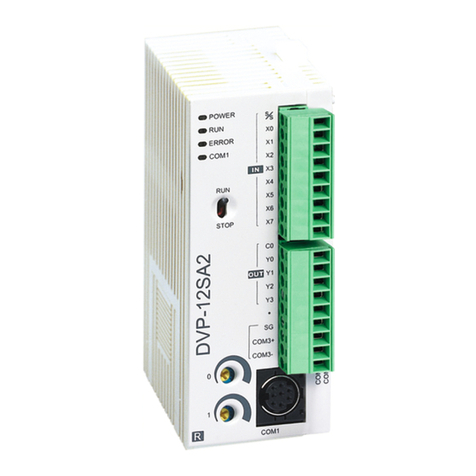
Delta
Delta DVP-SA2 User manual
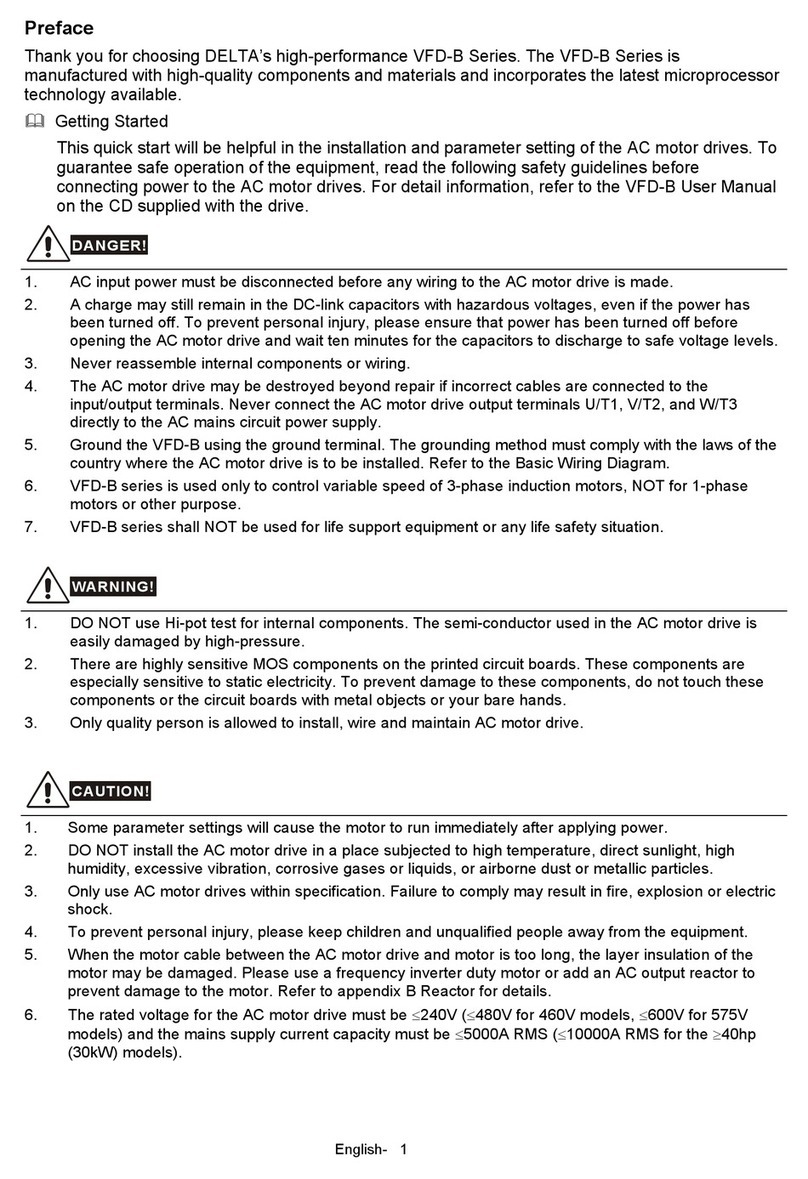
Delta
Delta VFD-007B User manual
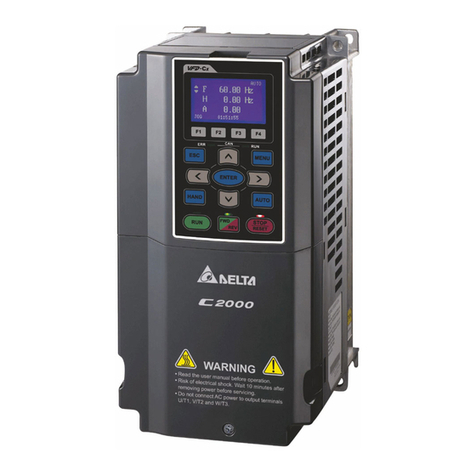
Delta
Delta C2000 Series User manual

Delta
Delta DVP-ES2 User manual
